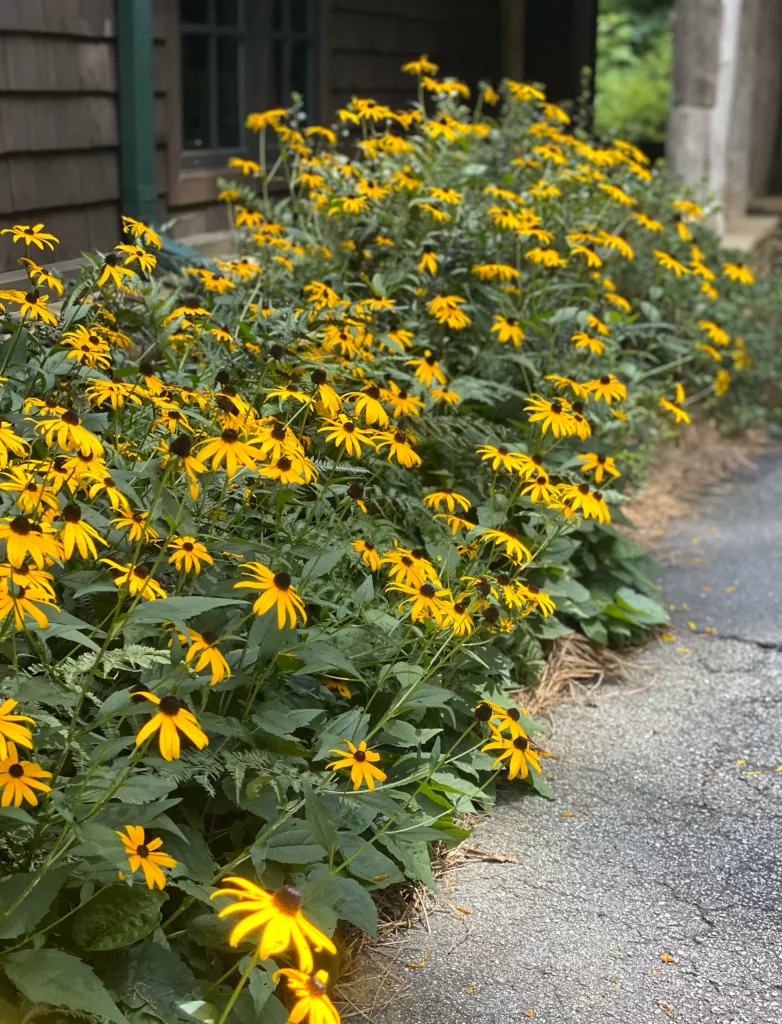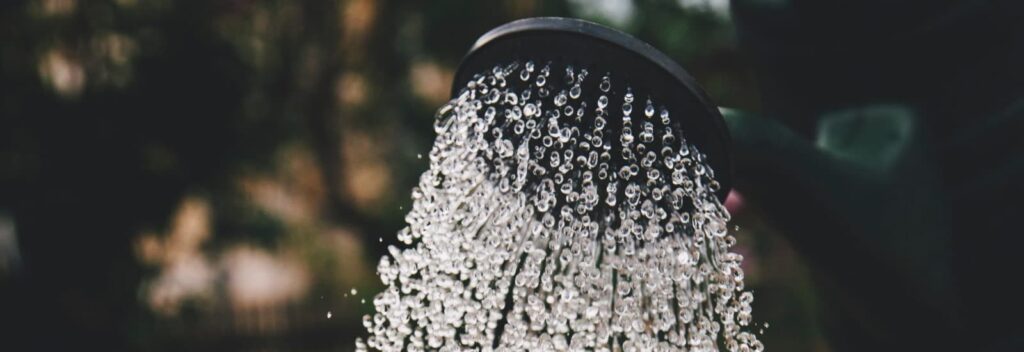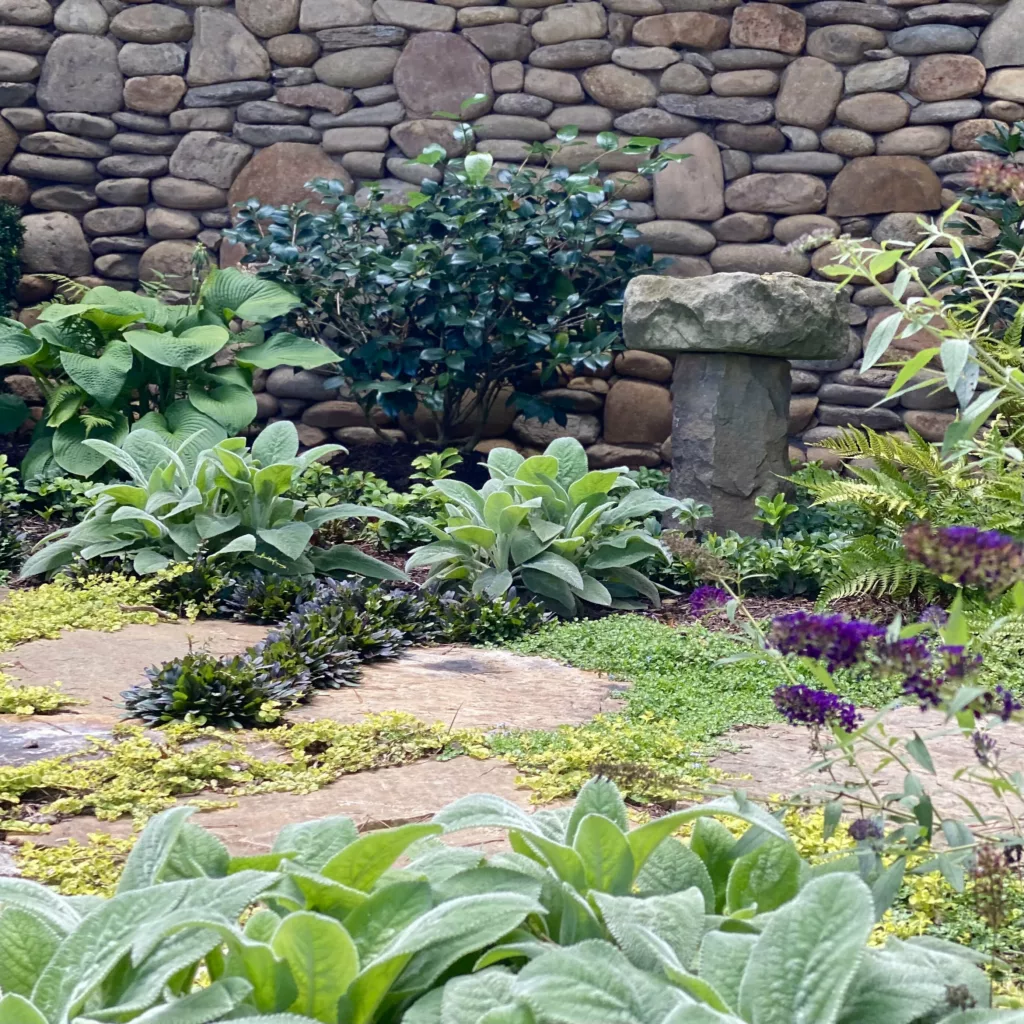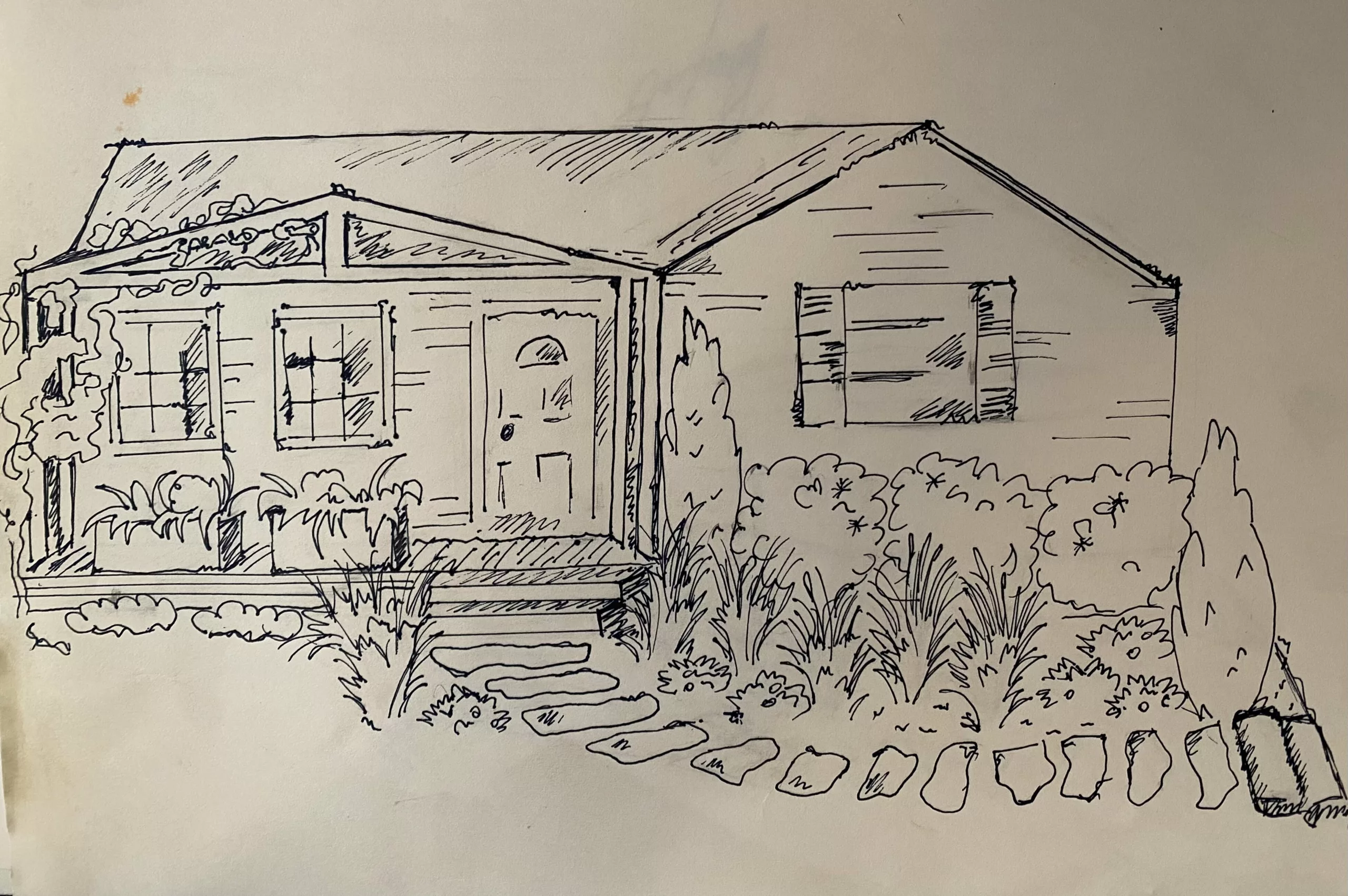Yes, you can create an eco-friendly oasis in your very own backyard using sustainable landscaping practices. Eco-friendly and beneficial plants come in all shapes, sizes, and colors, creating stunning outdoor spaces which not only look great–but also support the environment. (P.S. This is our mission here at Barefoot Garden Design!)
Sustainable landscaping is all about making choices which reduce environmental impact while creating a beautiful landscape. Selecting native plants for a design palette promotes biodiversity, supports local wildlife (including pollinators!), and reduces the need for excessive watering and chemical pesticides. Native plants are well adapted to their local climate, making them, on average, lower-maintenance and more resilient.
In addition to native plants, incorporating edible plants into a landscape plan has a myriad of benefits. Selecting specific varieties of fruit trees, creating aesthetic vegetable gardens and nooks of herbs, not only offer a source of fresh food but also enhance the aesthetic appeal of any yard.

And the big bonus point for sustainable landscaping? It not only benefits the environment, but it can also save money in the long run. And let’s be honest, who doesn’t love to save few bucks? By reducing water usage and minimizing the need for chemical treatments, sustainable landscapes typically incur have significantly lower maintenance costs.
Sustainable landscaping offers a multitude of benefits for both you and the environment. The choice to create a sustainable landscape is a conscious decision to reduce our environmental impact (without sacrificing our beautiful outdoor spaces.)
Let’s dig into some of the ways we at Barefoot Garden Design implement these practices– and discover ways to make a positive impact on the environment, one plant at a time.
Benefits of sustainable landscaping
One of the key benefits of sustainable landscaping is the promotion of biodiversity. Landscapes with a higher amount of diversity are better equipped to support a wide variety of local wildlife. This includes birds, butterflies, and bees, but also frogs, lizards, and bats. (Which all work together to benefit your garden!) When we select beneficial plants we are able to support a whole ecosystem by providing food and habitat for our local wildlife friends. Inviting these wildlife friends into the landscape actually improves the long-term health of the landscape!
Which brings me to our next benefit of sustainable landscaping– saving money. Creating a micro-ecosystem ultimately reduces water usage and minimizes the need for chemical treatments by creating a closed system where fewer resources go to waste. The natural elements of a sustainable landscape also work together to support and maintain the health of other plants and animals. All while providing you with significantly lower your maintenance costs! It’s a win-win situation which gives more year-after-year!

Choosing native and drought-tolerant plants
When it comes to sustainable landscaping, plant selection is crucial. Plants are the foundation of a sustainable landscape, and native plants are the MVP. Native plants are often well adapted to the local conditions as these plants have evolved to thrive with the specific climate, soil, and pests of the region. Native plants also provide food and shelter for local wildlife, and promote biodiversity within a landscape.
–> Want to know more about native plants? Check out this post!
In addition to native plants, incorporating drought-tolerant plants into a landscape can help reduce water use. Drought-tolerant plants are designed to survive and thrive in conditions with variable or little rainfall, making them the ideal choice for regions with limited water resources. Most drought-tolerant plants have deep root systems which allow them to access water from deeper soil layers, reducing the need for frequent watering.
When selecting plants, it’s important to consider the specific requirements of each species, and the conditions available in the landscape. Light, water, soil conditions, and elbow-room are all factors to consider when selecting plants. Grouping plants with similar needs together creates microclimates which maximize water efficiency and plant health.

Attracting pollinators with beneficial plants
Pollinators, such as bees and butterflies, play a crucial role in the reproduction of many plants, including fruits and vegetables. Attracting pollinators to a landscape not only supports a healthy ecosystem, but also increases the productivity of any edible plants which may be present.
Include beneficial plants with brightly colored flowers, nectar and pollen, and various flower shapes to provide valuable food sources for different pollinators. Choose a variety of native plants with different flowering times to ensure a continuous food supply for pollinators throughout the seasons.
To attract pollinators, it’s important to provide a mix of different flower shapes and sizes. This diversity appeals to a wide range of pollinators with varying feeding preferences. Be sure to include plants which provide shelter, such as shrubs and trees, to create nesting sites for birds, bees, and butterflies.
Incorporating natural elements
In addition to selecting the right plants, other natural elements can enhance a landscape’s sustainability. Rocks and mulch are two key elements which provide both aesthetic appeal and functional benefits.
Rocks create pathways, retaining walls, or decorative features. But they also act as a natural barrier, preventing erosion and keeping soil in place during heavy rains.
Mulch helps retain moisture in the soil, naturally suppresses weeds, and adds organic matter to the soil. This improves soil fertility and structure, which greatly reduces the need to fertilize a landscape season after season.
When selecting mulch, opt for organic materials such as wood chips, or straw. These materials are sustainable choices which can be easily replenished and contribute to the overall health of a landscape.

Organic fertilizers and pest control methods
Chemical fertilizers and pesticides have severely negative impacts on the environment, and our own health. Therefore, when maintaining a sustainable landscape, organic fertilizers and pest control methods are a must.
Beneficial plants tend to improve the quality of soil through different mechanisms. Be sure not to over-fertilize these plants, as excessive fertilizer and nutrients in the soil can actually harm them. If you want to feed or fertilize your plants, choose organic fertilizers, such as compost and manure. These natural fertilizers improve soil health, increase water retention, and promote beneficial microbial activity.
When it comes to pest control, organic methods can effectively manage pests while minimizing harm to the environment. Integrated Pest Management (IPM) is a sustainable approach which focuses on prevention, monitoring, and control of pests through a combination of methods. This approach aims to minimize the use of chemical pesticides and instead relies on natural predators, traps, and ecological barriers.
Creating a water-efficient irrigation system
Water conservation is a pillar of sustainable landscapes. Creating a water-efficient irrigation system, minimizes water waste and reduces overall water usage.
One of the most effective methods of irrigation is drip irrigation. This system delivers water directly to the plant’s roots, minimizing evaporation and ensuring the water is used efficiently. Drip irrigation is relatively easy to install and can be adjusted to meet the specific needs of different plants.
Another water-saving technique is the use of rain gauges or weather-based irrigation controllers. These devices monitor weather conditions and adjust irrigation schedules accordingly. Watering only when necessary, helps prevent overwatering and reduces water waste.
Rainwater harvesting is another sustainable practice which reduces the reliance on municipal water supplies. Collecting rainwater in barrels or cisterns is a free and natural resource for watering plants. Rainwater is also free of chlorine and some chemicals found in tap water. Depending on your municipality, this can be a healthier choice for your landscape.

Maintaining a sustainable landscape
As with any landscape it’s important to properly maintain a sustainable landscape to ensure its long-term health and beauty. Regular maintenance tasks such as pruning, weeding, and mulching are essential for the hygiene of a garden, and its overall health.
Pruning maintains the shape and size of plants and promotes healthy growth. It’s important to prune at the right time and using proper techniques to avoid damaging the plant. Each plant will have different pruning needs, and some plants won’t require pruning at all. Research the plants’ needs to ensure they get the care they need. (If you’re a current or previous client of BGD, feel free to reach out for a plant care guide for your landscape design!)

Weeding also keeps a landscape looking its best. Removing weeds not only maintains the look of a landscape, but also prevents competition for water and nutrients. When weeding, opt for manual removal or use organic weed control methods. And please, avoid herbicides.
Mulch should be replenished at least annually to maintain its effectiveness. As the mulch breaks down, it provides nutrients to the soil and helps suppress weed growth. Adding a fresh layer of mulch ensures the soil can continue to feed the garden plants.
Conclusion: Beneficial plants for a sustainable landscape
Transforming an outdoor space into a beautiful and sustainable landscape is a rewarding endeavor. Incorporating beneficial plants, attracting pollinators, using natural elements, and implementing water-efficient practices, creates an eco-friendly oasis which benefits both the homeowner and the environment.
Beyond the physical benefits of enjoying a healthy ecosystem, sustainable landscapes minimize maintenance costs by reducing water usage and chemical treatments.
With careful planning any landscape can be as beautiful as it is beneficial. At Barefoot Garden Design, these principles guide our decision making from design to installation.
If you’re ready to start your sustainable landscape, but don’t know where to begin, give us a shout! Set up a free site visit today!







